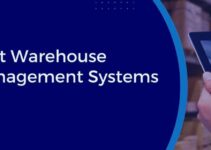Procurement logistics and supply chain management play a significant role in helping businesses and optimizing their operations and processes. Nowadays, the focus of businesses and companies is to make sure that they could timely purchase products and goods at a cost-efficient price while maintaining the risk factor low. Today, we’ll discuss procurement logistics and supply chain management; its definition; key elements, benefits, impact, and implementing it.
What is Procurement Logistics and Supply Chain Management?
Procurement logistics and supply chain management is the method of sourcing and finding raw materials and other needed supplies for the production of goods and services. The procurement process comprises managing various tasks and activities like finding and buying replacement parts and other basic supplies such as cleaning agents that facilitate the production and manufacturing process.
Various businesses and companies have got a large production setup and they have procuring managers and specialists to make sure the smooth flow of supplies. However, the procuring process comprises of following steps;
- Purchasing raw materials and other supplies
- Contract negotiation to receive various product items
- Invoice approval
- Paying vendors and suppliers
A well-developed procuring logistics system consists of the following activities and processes;
- Purchasing
- Production and manufacturing planning
- Managing Inventory
- Transportation
- Warehousing
Key Elements of PL & SCM
Some of the key elements of procurement logistics and SCM are as follows;
- Managing and implementing the purchasing of goods and services
- Planning and organizing the movement of goods and services via the SC network
- Making sure that the products reach the right customers on time
- Tracking inventory level
- Key to procuring logistics is cost efficiency and cost-effectiveness
- Comprehending the availability of quality potential suppliers and analyzing customers
- Complying with regulatory changes that would impact the SC process
- Employing a variety of methods and strategies like pickup or delivery, stocking sufficient supplies, arranging pickup or delivery
- Tracking inventory level to know whether the company is selling products at a profitable rate or not
Benefits of Procurement Logistics & SCM
Some of the main benefits and advantages of procurement logistics and SCM are as follows;
- Makes sure to deliver the products and goods on time
- Maintaining the cost, so that it doesn’t exceed the expected budget
- Ensuring high quality of product or material
- Recognizing needs and product sourcing from different suppliers
- Developing production plans relevant to the available suppliers and expected demands
- Analyzing stock level to make sure the availability of sufficient supplies
- Managing the flow of goods to satisfy the production schedule to make sure that shipment reaches the destination on time
Impact of SCM on Procurement Logistics
Procuring is the method of purchasing needed products and goods for the company. The procuring process comprises recognizing requirements, estimating the cost, and selecting the suppliers cost-efficiently to meet the needs cost-efficiently.
One of the main elements of the procuring process is dealing with the supply chain. The SCM comprises a network of service providers, distributors, manufacturers, producers, and service providers to deliver the finished goods and services to the end consumers. However, the objective of SCM is to make sure that the products satisfy the customer’s needs and wishes on time.
Supply chain management deals with a wide range of activities and processes relevant to procuring products and services. Some of the main activities of SCM are as follows;
- Planning & organizing the movement of supplies
- Quality control
- Analyzing performance
- Allocating resources to make sure timely delivery
SCM allows you to establish coordination and collaboration among various parts of the company and save capital resources. It makes sure that the products and goods reach customers in good condition, avoiding problems that would lead you to lose revenue and customer dissatisfaction.
Launching Procurement Logistics & SCM
Some of the steps involved in implementing procurement logistics and supply chain management are as follows;
Procuring Policy
Your procuring policy should comprise specific processes and procedures for conducting partnerships and business with suppliers and vendors. It makes sure the processing of your requests is on time.
Due Diligence
You have to be very careful about your potential suppliers before hiring any supplier. It is significant to track their performance issues and analyze their capabilities. It allows you to recognize any problem before they become serious, and protect your company against costly mistakes in the later stages.
Procuring Strategy
Your procuring strategy would tell you what type of products and services your company should purchase. How often your company needs to upgrade and replace its products and services? You can gather the information through customer feedback surveys and market research.
SCM Plan
A successful logistics program needs a logistical system that demands collaboration and coordination among various activities of buyers and suppliers. Well developed SCM plan would make sure that you would timely receive the material at the right price relevant to the demands of the company.
Conclusion: Procurement Logistics and Supply Chain Management
After an in-depth study of procurement logistics and supply chain management; we have realized that procuring is highly significant for logistics and SCM processes. If you are learning about PL and SCM, then you should keep in mind the abovementioned benefits, impacts, elements, and implementation steps.
Ahsan is an accomplished researcher and has a deep insight in worldly life affairs. He goes Live 3 days a week on various social media platforms. Other than research writing, he’s a very interesting person.


